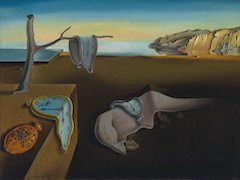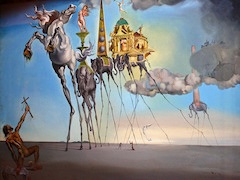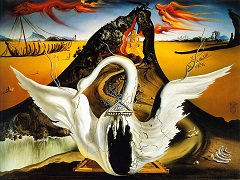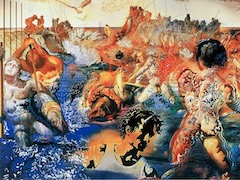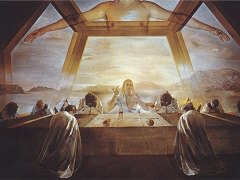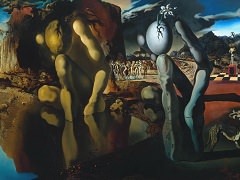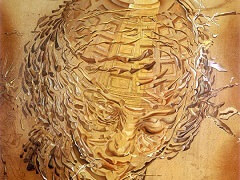The Ascension of Christ, 1958 by Salvador Dali
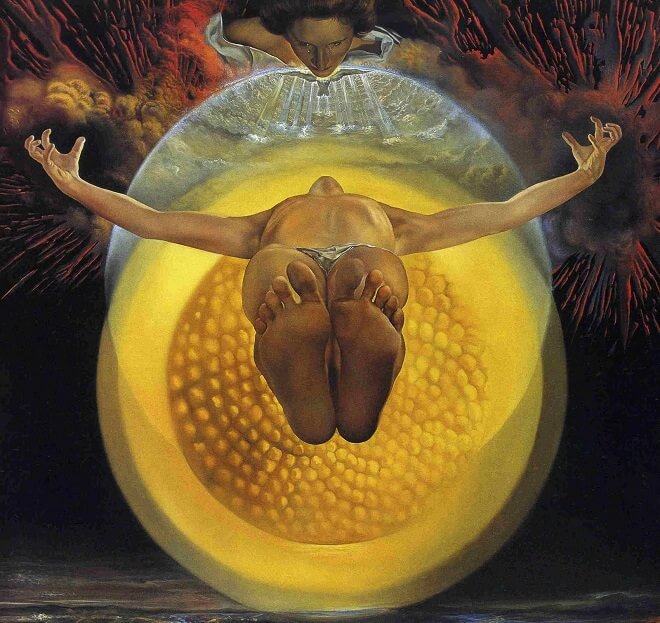
The Ascension of Christ has been a popular subject matter of Old Masters, such as Caravaggio, Titian, Vermeer, and Rembrandt, whom Salvador Dali highly admires.
Dali said that his inspiration for The Ascension of Christ came from a "cosmic dream' that he had in 1950, some eight years before the painting was completed. In the dream, which was in vivid color, he saw the nucleus of an atom, which we see in the background of the painting; Dali later realized that this nucleus was the true representation of the unifying spirit of Christ.
The feet of Christ points out at the viewer, drawing the eye inwards along his body to the center of the atom behind him. The atom has the same interior structure as the head of a sunflower. As with most of Dali's other paintings of Christ, his face is not visible. Above the Christ is Gala, her eyes wet with tears.
The figure of the Christ, from his feet in the foreground to his outstretched arms, forms a triangle. Dali had used the same geometry for his Lapis-lazuli Corpuscular Assumption. He used a triangular structure first in the 1951 painting Christ of Saint John of the Crow. The inspiration for this form came from a drawing by Spanish mystic St. John of the Cross, where Christ is depicted as if seen from above.

